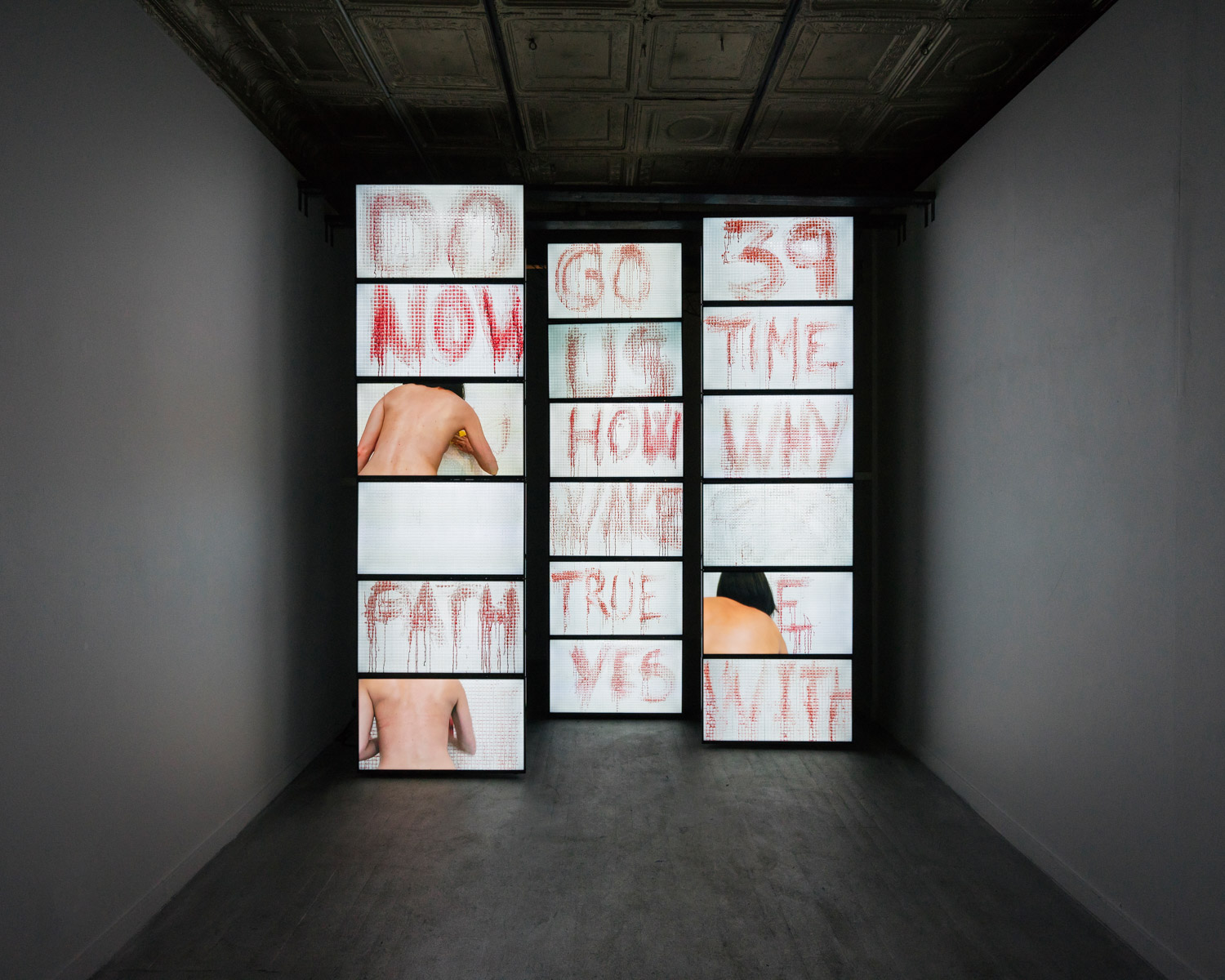Red-Hot
Yapci Ramos

Yapci Ramos Red-Hot, 2018
18-channel video installation, 12’05’

Yapci Ramos Red-Hot, 2018
18-channel video installation, 12’05’




New York, NY, January 26, 2017: As a primordial, spontaneous act, each month for two years, Spanish artist Yapci Ramos wrote one word on her bathroom wall. Written in wet red letters the size of her own reach, the words culminate in a minimalist, primitive diary, a reflection on her decisions and resignations.
In a new 18-channel video installation the artist, naked, wet, spreads a primary pigment onto her intimate, ephemeral canvas, washing it away moments later. Such performance evokes ancestral beliefs and tribal rituals of purifying women.1
She catches our eyes with an unapologetic stare resonant of a two-decade-long artistic practice seeped in the documentation of others: their carnality, gender, and especially the lives of women living on the fringes of decent society. But, life reveals itself and it turns out Ramos is not as far removed from her past subjects as she once believed.
Ramos turns the camera onto herself, diving deeper than ever into her own otherness, her choices and losses, feeling dangerously close to that fringe that she thought was more an intellectual interest than an emotional magnet.
Red-Hot is the necessary step in Ramos’s artistic research. As the artist becomes a reflection, she delivers a strikingly universal work.
Historically, writing in one’s own blood calls upon a range of practices from cave painting to radical feminist art. Portia Munson (Menstrual Prints with Text 1980s-90s), Tracy Emin (My bed, 1999), Christen Clifford (I want your blood, 2013) and numerous other feminist artists have made radical statements and propelled society forward through their work. Today, the movement to normalize menstrual bleeding is in full swing and led by capable thinkers including Kiran Gandhi and Miki Agrawal. Countless pens have been emptied in pursuit of analyzing, critiquing and philosophizing the socio-political role of fluids, bodies, art and gesture. Conclusions have been signed in blood.
The instinctive naming of an elapsed moon recalls the Surrealists, tethering the work to a gesture widely practiced in the 20s when an entire society was collectively trying to overcome a trauma. While Ramos did not anticipate her intimate obsession-cum-ritual-cum-artwork to emerge on the tip of a post-Weinstein New York City still raw with the scars of scandal and divided by the repositioning of sex, truth and success within countless power structures, there is no escaping the critical, if overheated context within which this exhibition opens.
Still, Ramos hesitates to step inside an activist circle, wanting instead to remain inside her personal experience and thus open to a larger context. “I did it because I had to. The world can decide what it all means.”
This is the artist’s second solo exhibition with the Gallery. In October 2018 she will present a museum solo presenting the last 20-years of her work at the Tenerife Espacio de Arte (TEA), Canary Islands, Spain.
1 The Berber culture, which dominated Ramos’s native Canary Islands, required purification by sea water to restore a woman’s fertility powers after her menstrual cycle.